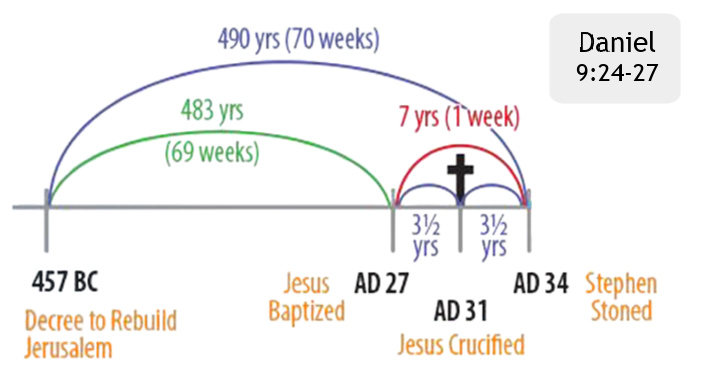Why Seven Year Tribulation?
The idea that there will be a seven year period of tribulation on earth, after believers are raptured up to Heaven, comes from a prophecy in Daniel 9 on “Seventy Weeks.” It is part of the eschatology held by dispensationalist theology, better known as the pre-trib position.
The seventy weeks in Daniel 9 are prophetic years that span a period of time from the decree of Artaxerxes’ authorization to rebuild Jerusalem in 457 B.C. to A.D. 34. When you read the passage of Daniel 9:24-27, the prophetic weeks are consecutive.
However, in the explanation of dispensational understanding of prophecy, meaning those who hold to a pre-trib rapture before the seven years of tribulation, the final week of these 70 weeks is seen as being disconnected and applied to the end of the age. They see 69 weeks of 457 B.C. to A.D. 27 and the final seven years taking place at some point in the future.
I do not understand the basis for believing the final week is to be separated and projected into the future. So here I simply want to point out some things about this prophecy that makes more sense to me and is more exegetical than the dispensational beliefs.
Let’s begin with Daniel 9:25 which states, “Know therefore and understand, that from the going forth of the commandment to restore and to build Jerusalem unto the Messiah the Prince shall be seven weeks.”
The dates of A.D. 27 and A.D. 34, the final seven years of the 70 week prophecy, are important because they mark the beginning of the 3 1/2 years of ministry of Jesus when He was baptized and when the gospel went to the Gentiles at the stoning of Stephen.
Daniel 9:26 states, “after threescore and two weeks shall Messiah be cut off, but not for himself.” This would be the middle of that seven years in A.D. 31, when Jesus was crucified on Calvary. Verse 27 of this chapter says, “and in the midst of the week he shall cause the sacrifice and the oblation to cease.”
When Jesus died on the cross, the curtain that separated the Holy Place from the Most Holy Place was cut in two from top to bottom. That signified the end of the sacrificial system of the temple. The true Lamb of God had been sacrificed once and for all. All previous lambs sacrificed in that sacrificial system pointed toward Jesus on Calvary.
In this chapter we find reference to Romans and their destruction of Jerusalem that took place in A.D. 70 but as I wrap up this overview on Daniel 9:24-27 I would like to look one last time at the importance of A.D. 34.
A.D. 34 concludes the “covenant with many for one week” (Daniel 9:27) and the prophecy confirms that the gospel message of the Messiah focused on Israel 3 1/2 years after the death, resurrection, and ascension of Christ before going to the Gentiles.
The governing council of the Jews, in A.D. 34, confirmed their rejection of Jesus as their Messiah by condemning Stephen to death. The leaders of Israel spoke and corporately rejected Christ. Stephen was stoned as Saul stood by orchestrating the nation’s decision, but from that point of time the Christian church broadened its mission and reach to the Gentiles.

• Visit my Dispensationalism vs Historicism page for deeper study.
